
June
2016 |
 |
|
|


Memorial Day 2016
It's that time of year when we remember and honor the fallen of America's wars. Recall, no one ever did a better job of remembering the Doughboys of World War I than President Reagan did in his first inaugural address. (VIDEO). Now, a quarter-century later, for those of us active in commemorating the Great War, nothing is of a higher priority than getting the National Memorial built in Washington. Lead designer of the winning monument, Joe Weishaar, reminds us of that fact and asks for the nation's support in his article, "This Memorial Day, Let's Build a WW1 Memorial." (ARTICLE)
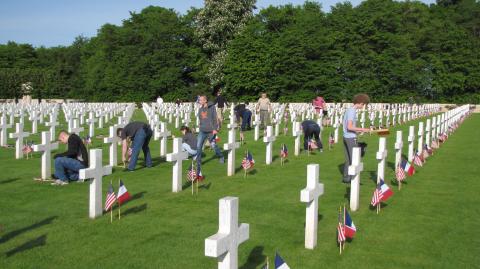 French and American Flags Placed at
Every Marker at ABMC Cemeteries in France
Meanwhile, here in the States and overseas, thousands of people are working to honor our fallen including those of the AEF. On my recent visit to the battlefields, we visited two WWI American cemeteries, the Oise-Aisne and Aisne-Marne, and the respective superintendents, Geoff Fournier and Shane Williams, could not have been more generous with their time. Preparations were just beginning for their annual Memorial Day commemorations. This is a big occasion at every ABMC cemetery, worldwide. I've just received some photos of the 2016 event at the St. Mihiel cemetery. Each cemetery follows some standard practices, such as planting the flags of America and the host nation. (See above.) And every site has its own traditions and associations. The U.S. Air Force — similar to the Marines for Belleau Wood — has a strong connection with St. Mihiel. The closing of the St. Mihiel Salient in September 1918 is considered the first major air battle for the service. Several namesakes of Air Forces bases are buried at the cemetery. I think you can tell how strongly the Air Force honors those traditions by the photo below:
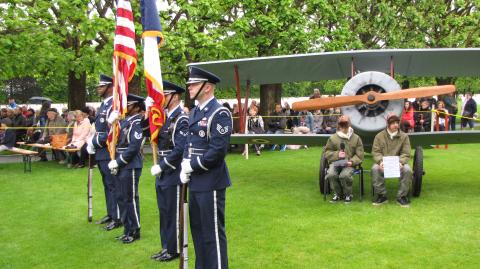 Memorial Day 2016
Try to remember our veterans this Memorial Day weekend.
MH

|
2016 Events
2016 National WWI Symposium
The World War I Historical Association, the General Douglas MacArthur Foundation, and the World War One Centennial Commission are holding this year’s event on 21-22 October in Norfolk, VA. This year’s theme is “1916: Sex, Planes, and Disasters.” DETAILS
National World War I Museum Memorial Day Commemoration
A full day of events at the Kansas City Liberty Memorial complex on 30 May, including: Vehicle display and truck march, memorial benefit pancake breakfast, remembrance ceremony with Keynote address from former Chairman of the Joint Chiefs of Staff and Kansas City native General (Ret.) Richard Myers, and Walk of Dedication Ceremony. DETAILS
WFA East Coast Spring Symposium
11 June 2016 will be an exciting day of World War 1 history at Baltimore's Maryland War Memorial Building. German soldiers, African-American Doctors, the U-boat Deutschland, Wartime gender politics in France, and the AEF assault on Montfaucon will all be examined. FLYER
314th Infantry Memorial Day Service
Sunday, 2:00 p.m. May 29, 2016; Time: 2:00 PM, Washington Memorial Chapel, Valley Forge, PA. Speaker: William T. Walker, author of Betrayal at Little Gibraltar. DETAILS
|
|
General Pershing as You
Have Never Seen Him
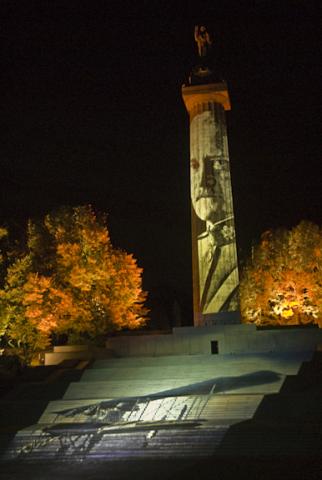
The Commander of the AEF Projected onto
the Montfaucon Monument (ABMC Photo)

Horatio, Lord Kitchener

Sent on a mission to Russia in June 1916, Lord Kitchener (1850—1916) drowned 100 years ago on 5 June when his ship, HMS Hampshire was sunk by a German mine off the Orkneys. Surprisingly, little is written about him, either his service as British secretary of state for war in the first years of WWI, when he organized the empire's armies on an unprecedented scale, or his earlier distinguished service.
 Brief Bio from the BBC
Brief Bio from the BBC
 The Campaigns of Horatio Kitchener
The Campaigns of Horatio Kitchener
 Field Marshal 1st Earl Kitchener of Khartoum
Field Marshal 1st Earl Kitchener of Khartoum
 About That Poster
About That Poster
 Kitchener's New Armies
Kitchener's New Armies
 No Love Lost: Churchill and Kitchener
No Love Lost: Churchill and Kitchener
 Gallipoli Failure
Gallipoli Failure
 Kitchener's Death
Kitchener's Death

British Shell Failure at Jutland
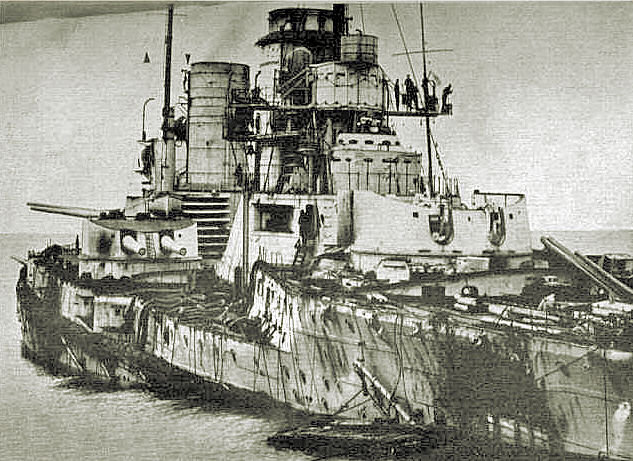
After Jutland, Still Afloat
The German battlecruiser SMS Seydlitz (above) survived 24 large shell hits from Royal Naval dreadnoughts during the Battle of Jutland. How was this possible?
The answer is that British naval armor-piercing shells proved to be utterly inadequate to the challenge. They were brittle and frequently simply disintegrated on contact without penetration. When the explosive content did activate, it proved to be too weak to ensure an effective impact explosion. The Germans shells, in contrast, had delayed action fuses that considerably improved their efficacy. (Source: WFA Website)

18 June 1916: The Death of Moltke
Not in order to devalue the army, but in honour of the old army and as a warning to coming generations, do I lay a finger on the wound that is Moltke.
Erich von Ludendorff, General (with many axes to grind), My War Memories, 1914-1918
|

|

U.S. Centennial Organizations & Resources
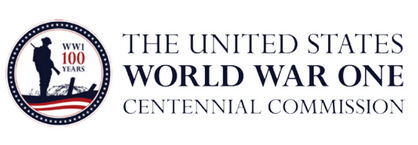
worldwar-1centennial.org/

theworldwar.org/
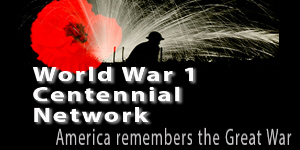
www.ww1-centennial.org/

www.firstdivisionmuseum.org/

www.abmc.gov/
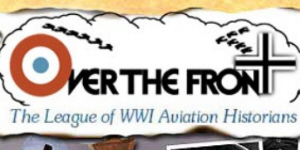
www.overthefront.com/
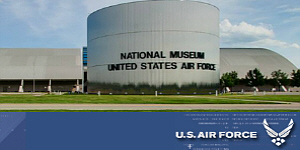
www.nationalmuseum.af.mil/
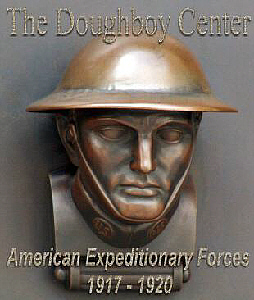
www.worldwar1.com/dbc/

facebook.com/wwiinventory

wisconsinhistory.org/

www.uswarmemorials.org/

www.macarthurmemorial.org/

www.saving-hallowed-ground.org/
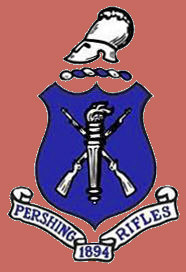
www.theprgroup.org/
Support Worldwar1.com's Centennial Effort
Shop at Amazon.com
|
The Centennial Ticker
Centennial Pilgrimage: A Visit to the Lafayette Escadrille's Airfield for the Battle of Verdun

Insignia of the Lafayette Escadrille
The American volunteers serving in the Lafayette Escadrille first caught the world's and America's attention during their four months' service in the Battle of Verdun.
After an initial month of service at Luxeuil near the Swiss border, the new squadron was transferred into the Verdun sector to the Behonne Aerodrome near the village of Bar-le-Duc, about 25 miles southwest of Verdun. Furnished with some excellent reconnaissance photos from author Steve Ruffin, I decided to include a visit to the Behonne Aerodrome — still an open farm field with some original buildings existing — as part of my recent 1916–2016 Verdun In-Depth battlefield tour I was leading on behalf of Valor Tours, Ltd.

Lafayette Escadrille Historian Steve Ruffin Provided This Map of the Site
I look back to the visit now as a pilgrimage. We made our visit in May, precisely 100 years after the squadron arrived at Behonne.

The Field Today: Everyone Was Surprised by the Slope
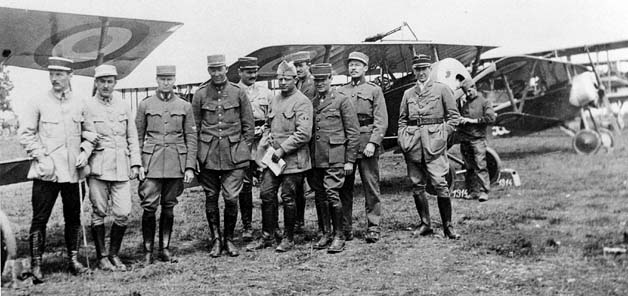
The first volunteers at Bar-le-Duc. L-R; Lt. DeLaage, Charles Johnson, Laurence
Rumsey, James McConnell, William Thaw, Raoul Lufbery, Kiffin Rockwell,
Didier Masson, Norman Prince, Bert Hall. (Again, note the slope of the field.)

Our 2016 Group in About the Same Position as the Pilots
Some details about the service of the Lafayette Escadrille while they were stationed at Behonne:
During this period, during which Raoul Lufbery and several others joined the squadron, it was very active, flying 146 sorties from the Behonne Airfield. Bert Hall scored the squadron’s second victory and his first on 23 May, and he scored his second on 23 July. Lufbery shot down a two-seater on 31 July.
During this tour, Rockwell and Thaw were wounded, and on 23 June Victor Chapman was shot down over the Verdun sector after being attacked by three German fighters. By mid-September when it was reassigned to Luxeuil, the squadron could claim 13 victories.
For a week in July, the French Air Force pilot Lieutenant Charles Nungesser flew with the Lafayette Escadrille. Nungesser went on to become one of France’s great aces, with 45 victories.

Founding Escadrille member Bill Thaw on the left alongside legendary French ace Charles Nungesser. Nungesser was attached to the squadron for a short time while recuperating from injuries he received in a crash. Capitaine Georges Thenault (far right) was the commander
of the squadron. In the background is the old Ferme Ste. Catherine farmhouse at Behonne
Aérodrome, Bar-le-Duc, France in 1916.
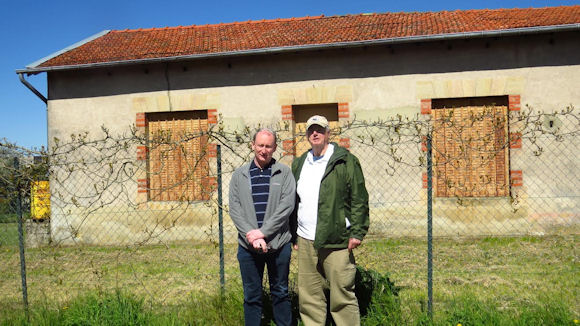
Patrick Gregory of Centenary News, First World War, and Mike Hanlon, Editor/Publisher of Worldwar1.com, at Ste. Catherine farmhouse, 5 May 2016
Thanks to Steve Ruffin and the New England Air Museum for the text and images. Later this year, Steve will be telling the exciting story of the escadrille's efforts at Verdun in the August and September issues of our magazine OVER THE TOP. (See details above on page 1 on subscribing.)
Bless Those Reenactors
Let's recognize the great contribution made to the Centennial commemoration by the Great War reenactors. They don't just add "color" to events, they bring those who made our present-day world to us in a concrete way. "Living History" is what some now call it. At ceremonies and seminars, and in reaching out to young people, they help remind us that while things were different back then, those people who sacrificed everything they had for us were like us and connected to us in wonderful ways. Reenactors are all born educators and love to share what they have learned about their uniforms, weapons, gear, and the units they identify with. Not to get too highfalutin, but I just love these folks because they absolutely ignore the modernist trend of rejecting the past and all prior human experience as irrelevant. They live out Faulkner's wisdom: "The past is never dead. It's not even past."
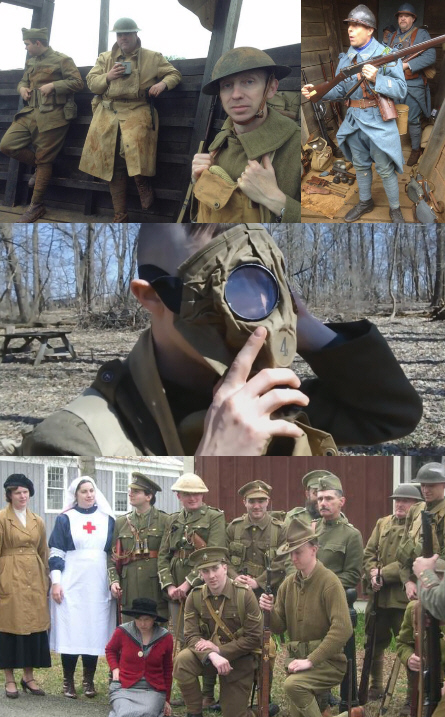
From the Top: Doughboys & Poilus, Carlisle, PA; a Rockford, IL, Doughboy Demonstrates a Gas Respirator; Reenactors at a Monroe, NY, History Event
|
|

The Incredible 32 Days of June 1916
Stretch June 1916 a little, adding a day at each end — 31 May and 1 July. This minor astronomical adjustment allows adding two monumental events, to what was already a hyperactive period. In hindsight, we can see a different kind of war after this Long June. Collectively, they had changed the game, and other forces — not evident to the combatants at the time — had been set loose or were accelerated.
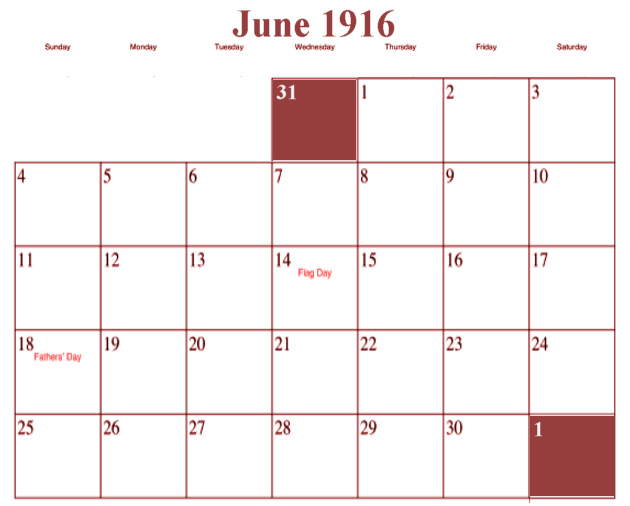
|
Consider this list:
31 May - 1 June: The Battle of Jutland
Despite some tactical successes, Germany discovers her big ship-building program has been a waste and must look to submarine warfare. This will inevitably bring the United States into the war.
3 June: President Wilson Signs the National Defense Act of 1916
A success of the Preparedness Movement, the legislation expands the standing army and the National Guard, creates the Army Air Division, establishes the Reserve Officer Training Corps, and facilitates mobilization should war come, which it did 10 months later.
4 June: The Brusilov Offensive Is Launched
Russia's biggest "success" of the war will cost one million killed and contribute to the demoralizing of the army. For the Central Powers, Austria-Hungary's military will be decimated and become utterly subordinate to Germany's.
5 June: Arab Revolt Begins with an Assault on the Ottoman Medina Garrison
Much is still debated about the military importance of the Arab operations partly led by T.E. Lawrence, but the political importance of Sheik Hussein and his sons siding with the British at this time is undeniable. For the British Empire, Gallipoli had been a failure, the surrender of Kut had been a disaster, and the Ottoman Sultan's call for jihad was still in force. By siding with the British, Feisal guaranteed that the Arabs would not be unified against the Allies, that Egypt would remain a safe base of operations for them, and that Allenby's advance would not have to worry about a huge and open right flank on its march north. What it meant for the Middle East of today is complicated and beyond discussion here.
8 June: Fort Vaux Captured & Final Assault Launched (23 June)
Refocusing on the right bank, Germany attempts a concentrated offensive to capture Verdun that is ultimately defeated in July by French artillery. The appalling casualties, however, will take a near-fatal toll on French Army morale.
1 July: The Battle of the Somme Opens
The greatest battle of attrition in the West will bring a most critical problem to everyone's attention: the belligerents of 1914 are now running out of men — the war cannot go on forever. Germany, under Hindenburg and Ludendorff, will consciously wage "total war." The Allies, being more populous, will continue trying to wear down the opposition.
All-in-all, the Long June of 1916 led to a different kind of war in 1917 and 1918 and, eventually, a different world thaN the politicians and people of 1916 thought they were fighting for.
|
|

Announcing Our 2017 Centennial Battlefield Tour Schedule

2017 Program
Valor Tours is happy to announce its 2017 World War I Centennial Battlefield Tours. Our brochure is currently in preparation — subscribers to the Trip-Wire will receive it via email as soon as it is ready. Just click on the "Sign Up" button on the top of the page if you haven't registered yet. Here are some details for you:
8 – 15 May 2017: Flanders 1917 Campaign
Includes: Vimy Ridge, Messines, and Passchendaele
24 July – 3 August 2017: Caporetto and the Italian Front
Includes: The Eleven Battles of the Isonzo, Caporetto 1917, Monte Grappa, and the 1918 Line
The full brochure covering the trip and registration details can now be downloaded at:
http://www.worldwar1.com/pdf/ValorTours_2017Flyer.pdf
Remaining 2016 Program
14 – 21 August 2016: The Somme In-Depth
Visiting the Hawthorne Mine Crater, the Soccer Balls of the Somme Site, and Where Alan Seeger Met His "Rendezvous."
Rooms Still Available on our 2016 Somme Tour. The full brochure covering the trip and registration details can now be downloaded at:
http://www.worldwar1.com/pdf/ValorTours_2016Flyer.pdf
|
|
|

|

Featured Topic
Prepare for the 100th Anniversary of the
Battle of the Somme
Has it really been 100 years (less one month)? 100 years since that archetypal image of the lone soldier going over the top only to be mowed down by an enemy machine gun before he ever saw his opponent got etched permanently into humanity's imagination? Around 1 July, you will be hearing a lot about the commemoration of the disastrous first day of the British Army. However, after that, you might not be hearing much about the bloodiest battle of the Western Front with its relentless attack-counterattack episodes. Here are four works that will give you the in-depth knowledge you need to understand what happened at what Kipling described as "The garden called Gethesemane." (In Picardy it was.)
I am recommending the classic account of 1 July 1916, the best single volume history of the battle I know of, an account of the German experience, and the best and most thorough battlefield guide available, from my friends Toni and Valmai Holt.
|
Reload page if any book covers fail to appear.

Was There a Coal Gap?
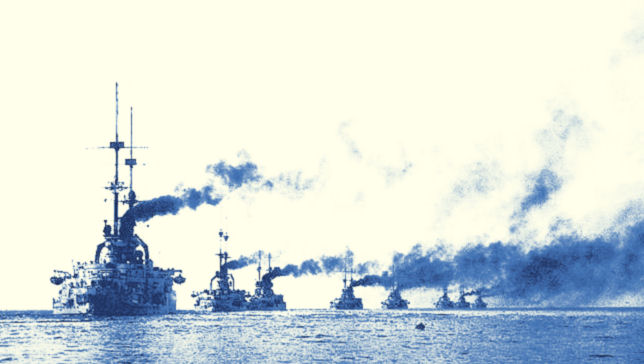
Prewar Sortie by the High Seas Fleet
Most of the big ships that fought 100 years ago at Jutland, except the Queen Elizabeth-class battleships of the Grand Fleet's battlecruiser squadron, were powered by coal. According to Royal Australian Navy admiral and historian James Goldrick, German coal was of an inferior quality throughout the war. All things being equal, this should have given Royal Navy ships an operational advantage throughout the war. But there has not been a lot of research on this matter.
Coal-burning ships were absolutely dependent upon the quality of that coal in reaching their designed
speeds and maximum endurance. The best coal was Welsh. There was good
coal in other parts of the world, such as Southport in New Zealand, but the
majority of countries did not have access to such stocks – German coal certainly
does not seem to have been of the same quality for steaming coal.
The
difference could be extraordinary. At an extreme, trials in the battlecruiser
Australia demonstrated that, while she used 10 tons of Welsh coal and 15 boilers
in an hour to achieve just over 16 knots run (her designed speed was 25 knots),
she required all 31 boilers and 16 tons per hour — supplemented by a large
amount of oil — to achieve the same speed and distance run using Australian
coal.
Differences of this magnitude meant profound differences in the
operational capabilities of both individual ships and of fleets, but we know very
little of how the issue worked itself out in their employment — even with evidence
such as the battlecruiser Von der Tann’s plaint during the abortive High Seas Fleet sortie of April 1918 "Cannot do more than 21 knots on account of bad coal,
coal consumption 50% higher than usual!"
In any case, Admiral Goldrick thinks this coal gap has been neglected in earlier naval histories of the war and is worthy of further study.
|
|

The Importance of Aviation in
Breaking the Trench Stalemate
By John Terraine
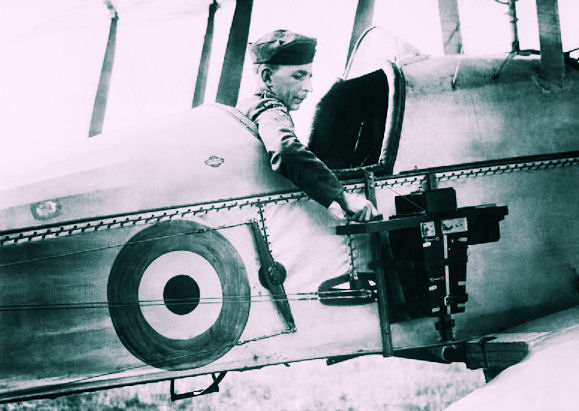
RFC BE2 Equipped with Camera
In general, 1915 was a miserable year for the BEF, with every kind of equipment in short supply. On the other hand, it was also a period of experiment and incubation of what, in some cases, turned out to be priceless new techniques. As one novelty breeds another, photo reconnaissance, having appeared, was much in demand — and so, on both sides of the line, was prevention of enemy photography, leading quite naturally to air combat, in turn calling for specialized aircraft . . . the necessity to seize and hold air supremacy was perceived [by] 1915.
1915 . . . saw the first step taken toward the ultimate war-winner. In the artillery war. . . in the words of two Royal Artillery brigadiers, who have researched firepower with such authority . . . the "starting point" and pivot was the Royal Flying Corps pilot.
The artillery war was, from the first, almost entirely conducted by "indirect fire," i.e., the gunners of all armies were normally shooting at invisible targets. This made possession of an accurate map essential — accurate, that is to say, to within 15 to 20 yards. No such thing existed in 1915, so the decision was taken to have one made by the newly formed Field Survey Companies of the Royal Engineers, working closely with the RFC. From this derived many hours of tedious but highly dangerous photographic flying for the RFC, but for the artillery the opportunity came to restore surprise and precision to battle — which it duly did at Cambrai in November 1917. And this technique, in the hands of [both] the Germans and Allies in 1918, supplied the key to unlocking the trench-bound front.

Effective Artillery Broke the Trench Stalemate in 1918
[For the British Army] this could not have been done without the RFC, and in conjunction with the rest of its day-in, day-out cooperation with the Royal Artillery. This constituted in my opinion the most important contribution of the Royal Flying Corps to winning the war.
From John Terraine's 1994 lecture to the Royal Air Force Historical Society
|
|
|
Thanks to each and every one of you who has contributed material for this issue. Until our next issue, your editor, Mike Hanlon. |
|
 (Or send it to a friend)
(Or send it to a friend)
|
Design by Shannon Niel
Content © Michael E. Hanlon
|
|
|




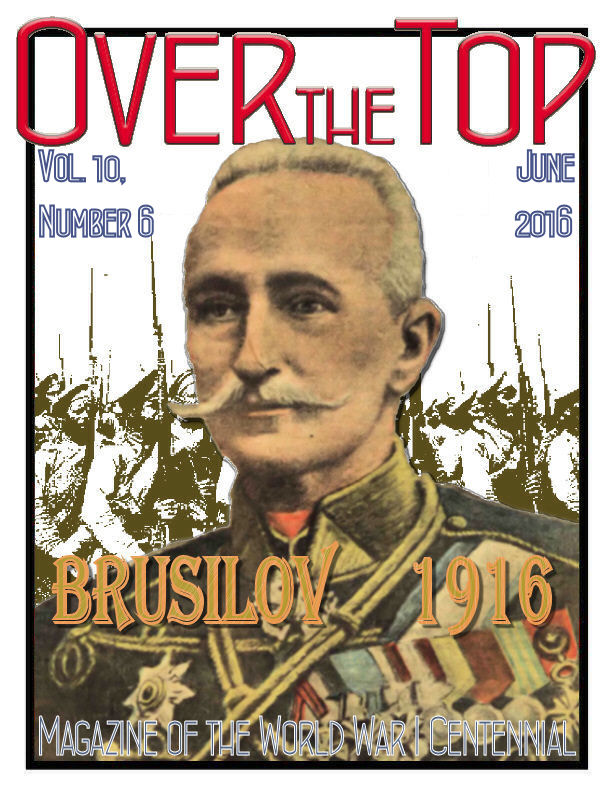



![]() Brief Bio from the BBC
Brief Bio from the BBC
![]() The Campaigns of Horatio Kitchener
The Campaigns of Horatio Kitchener
![]() Field Marshal 1st Earl Kitchener of Khartoum
Field Marshal 1st Earl Kitchener of Khartoum
![]() About That Poster
About That Poster
![]() Kitchener's New Armies
Kitchener's New Armies
![]() No Love Lost: Churchill and Kitchener
No Love Lost: Churchill and Kitchener
![]() Gallipoli Failure
Gallipoli Failure
![]() Kitchener's Death
Kitchener's Death























